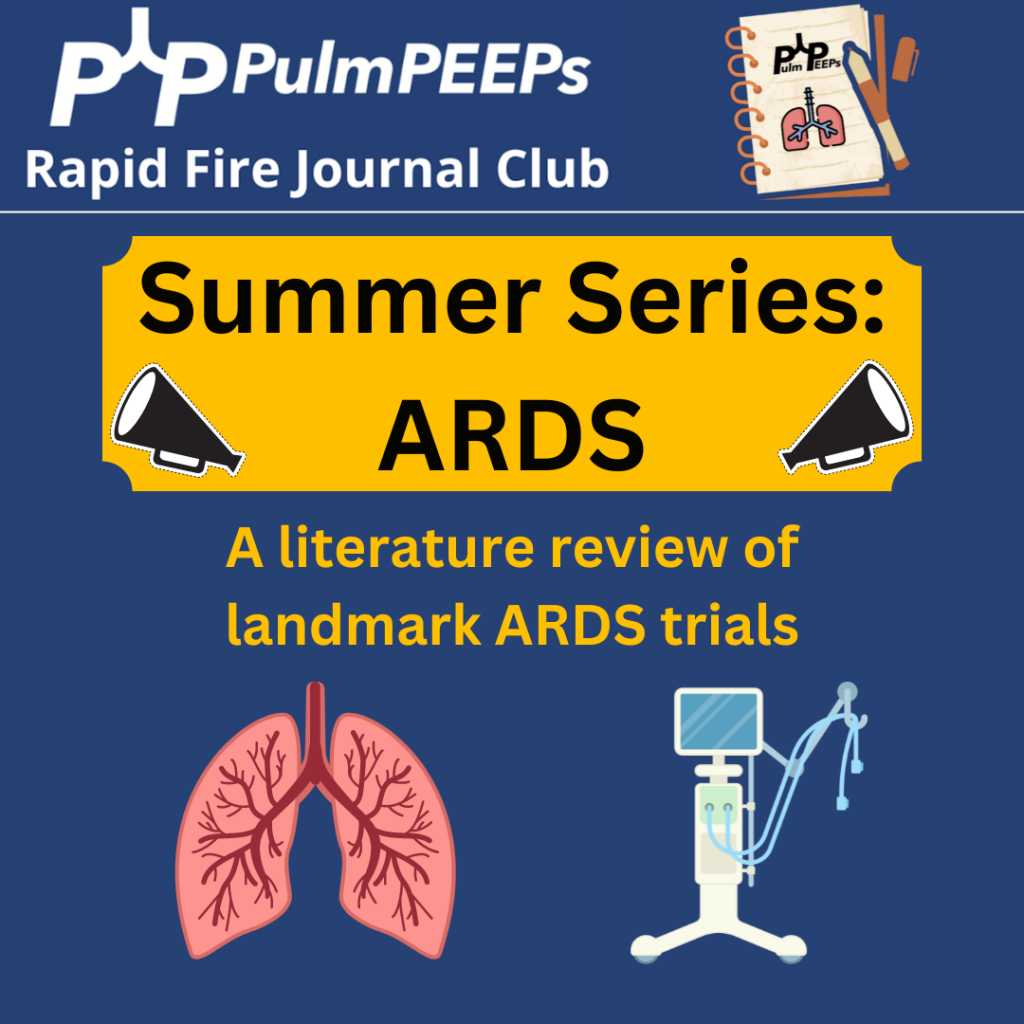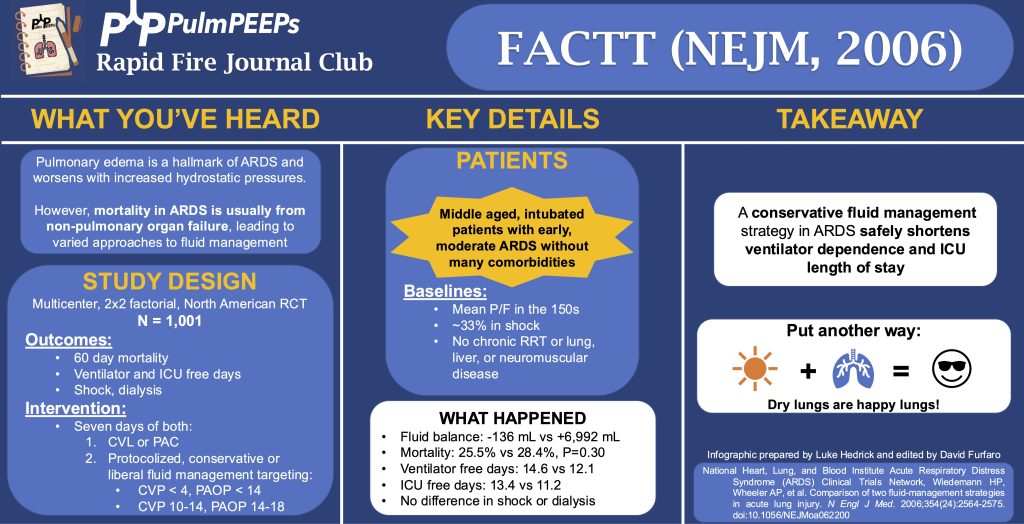79. RFJC 10 – ARDS Series – FACTT
Description
In this podcast episode, we continue our summer series reviewing landmark ARDS studies. Today, Dave and Luke discuss the FACTT trial, which investigated fluid management strategies in ARDS. This was published in the NEJM in 2006.
<figure class="aligncenter size-large">
 </figure>
</figure><figure class="wp-block-image size-large">
 </figure>
</figure>Article and Reference
We’re talking about the FACTT trial today which was a “Comparison of Two Fluid-Management Strategies in Acute Lung Injury”
Infographic
<figure class="wp-block-image size-large">
 </figure>
</figure>Summary of discussion:
Background: The FACT trial aimed to address fluid balance in ARDS, given the complexity of managing pulmonary edema and systemic organ failure. The challenge has been finding the right balance between managing fluid to optimize cardiac function and avoiding exacerbation of pulmonary edema.
Study Design:
- Randomized Controlled Trial: Conducted at 20 North American medical centers from 2000 to 2005.
- Participants: Included intubated ARDS patients who required or were planned to receive a central venous catheter. Excluded patients with chronic diseases, recent MI, or irreversible conditions. Shock was not an exclusion criterion.
- Interventions: Patients were randomly assigned to either a liberal or conservative fluid management strategy, and also received either a PA catheter or a central line.
Fluid Management Protocol:
- Liberal Strategy: Aimed for higher filling pressures (CVP of 10-14 or wedge pressure of 14-18).
- Conservative Strategy: Aimed for lower filling pressures (CVP less than 4 or wedge pressure under 14).
<figure class="wp-block-image size-large">
 </figure>
</figure>- Fluid Balance: The liberal group had a net positive fluid balance of around 7 liters, while the conservative group had a net negative balance of about 130 cc.
Results:
- Mortality: No statistically significant difference in 60-day mortality between the liberal and conservative groups (25.5% vs. 28.4%, respectively).
- Ventilator and ICU-Free Days: The conservative strategy resulted in more ventilator-free and ICU-free days.
- Shock and Dialysis: There was no difference in shock rates, but the conservative group had a trend toward fewer dialysis requirements (10% vs. 14%, p=0.06).
Conclusion: The trial indicated that a conservative fluid management strategy in ARDS patients can reduce ventilator dependence and ICU length of stay without worsening shock or end-organ function. It underscores the benefit of managing fluid conservatively to protect lung function, even though it didn’t significantly reduce mortality.
Overall, the FACT trial supports the practice of conservative fluid management in ARDS, advocating that “dry lungs are happy lungs” for improving patient outcomes.





